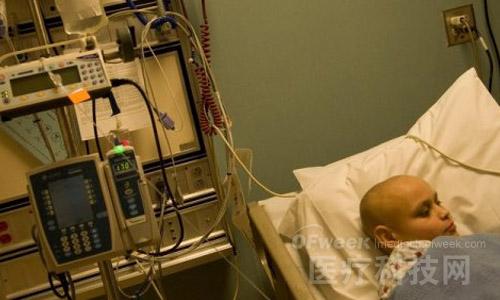ã€Front】Nature: New targets for cancer treatment
Researchers at the University of Copenhagen have discovered a molecular mechanism that reads so-called epigenetic information and promotes our DNA damage repair. This knowledge can be used to develop new targeted cancer therapies, where "inhibitor molecules" can prevent cancer cells from repairing themselves. Researchers have registered patents for their new knowledge and the results were published online on June 22nd. Professor AnjaGroth and her team in Copenhagen are focusing on understanding the underlying molecular mechanisms responsible for the development and maintenance of more than 200 specific cell types in our body. Now, the new breakthrough results have allowed them to obtain their own intellectual property patents. TONSL protein and histone binding localize to DNA damage points They have demonstrated how a cellular DNA repair protein can be localized to DNA damage by histone modifications that bind tightly to DNA. In collaboration with Dinshaw Patel of the Memorial Sloan-Kettering Cancer Center, the researchers obtained detailed crystal structures of TONSL protein and histone binding, showing how the TONSL protein is localized to DNA damage. Ph.D. student Giulia Saredi is responsible for functional cell biology experiments. He explained: "When our cells divide, not only are our DNA replicated, but epigenetic information that is vital to the cell's identity and health. Epigenetic information exists in structures known as chromatin. We have found that TONSL molecules recognize specific chromatin signals that occur when DNA is replicated during cell division. TONSL recognizes this signal to promote damage repair in our DNA. ." Can be used to design cancer cell inhibitors The researchers' findings provide a new basis for understanding how chromatin (the structure of DNA in the nucleus) directs DNA repair processes within our cells. As a basic researcher, they are pursuing an understanding of how our cells work, and now this has created a unique possibility in designing inhibitors that are useful in cancer treatment. The structure of the TONSL protein and histone binding tells the researchers how the TONSL proteins work, giving them the opportunity to design a molecule that binds to TONSL and prevents localization to DNA damage. Cancer cells divide rapidly and experience high levels of DNA damage - these cells will die if there is no effective repair system. Therefore, cancer cells are highly dependent on DNA repair mechanisms, and this new molecular mechanism has been found to be an attractive target for cancer treatment. Such inhibitor molecules can be used in the treatment of cancer because blocking the function of TONSL can promote the damage and eventual death of cancer cells. The research team has now assembled a team of experts in medicinal chemistry and drug design to develop such small molecule inhibitors. Professor Anja Groth said: “Basic research is our core competency. This finding once again demonstrates that social investment in understanding basic biological processes is crucial, and this can be a new way to explore disease treatment. Use our basic research. The results of future cancer treatments may be an important driver in our future work." Fruit And Vegetables Cutting Machine fruit and vegetables be cut into clivers, pcs, and cubes Industrial Vegetable Cutting Machine,Vegetable Cutting Machine,Commercial Vegetable Cutting Machine,Fruit Dicing Machine JIANGSU SKYPLAN GREENHOUSE TECHNOLOGY CO.,LTD , https://www.engreenhouse.com